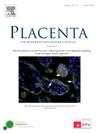Characterization of senescence-associated transcripts in the human placenta
IF 3
2区 医学
Q2 DEVELOPMENTAL BIOLOGY
引用次数: 0
Abstract
Introduction
Fusion of mononucleated cytotrophoblasts into syncytium leads to trophoblast senescence. Yet, premature senescence is associated with preeclampsia, fetal growth restriction (FGR), and related obstetrical syndromes. A set of 28 transcripts that comprise senescence-associated secretory phenotype (SASP) was recently described in placentas from women with preeclampsia. We posited that this transcript set is uniquely regulated in late-term placentas or in placentas derived from participants with major obstetrical syndromes.
Methods
Using our large placental RNAseq bank, we analyzed data from healthy participants (n = 33) with histologically normal placentas, representing delivery at 37–41 weeks. To represent diseases, we included RNAseq data from participants (n = 220) with severe preeclampsia, FGR, FGR with a hypertensive disorder (FGR + HDP), or spontaneous preterm delivery, and healthy controls (n = 129). We also assessed the expression of several SASPs in primary human trophoblasts that were exposed in vitro to hypoxia, reduced differentiation, or ferroptotic or apoptotic signals.
Results
Among the 28 SASP transcripts analyzed, eight had a significant change between deliveries at <37 weeks vs ≥ 41 weeks, including upregulation of FSTL3, IL1RL1, INHBA, and VEGFA and downregulation of STC1, RARRES2, MRC2, and SELP. The expression of SASP mRNAs was enriched in the placentas from the assessed syndromes, with most expression changes in placentas from FGR/HDP. Our in vitro analysis associated hypoxia or apoptosis with altered expression of FSTL3, VEGFA, and DKK1.
Discussion
A set of placental SASPs defines late-term placentas, placental dysfunction-related clinical syndromes, and in vitro-defined trophoblast injury. Trophoblastic SASP signatures may assist in characterizing placental senescence in health and disease.
求助全文
约1分钟内获得全文
求助全文
来源期刊

Placenta
医学-发育生物学
CiteScore
6.30
自引率
10.50%
发文量
391
审稿时长
78 days
期刊介绍:
Placenta publishes high-quality original articles and invited topical reviews on all aspects of human and animal placentation, and the interactions between the mother, the placenta and fetal development. Topics covered include evolution, development, genetics and epigenetics, stem cells, metabolism, transport, immunology, pathology, pharmacology, cell and molecular biology, and developmental programming. The Editors welcome studies on implantation and the endometrium, comparative placentation, the uterine and umbilical circulations, the relationship between fetal and placental development, clinical aspects of altered placental development or function, the placental membranes, the influence of paternal factors on placental development or function, and the assessment of biomarkers of placental disorders.
 求助内容:
求助内容: 应助结果提醒方式:
应助结果提醒方式:


